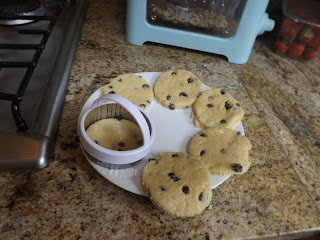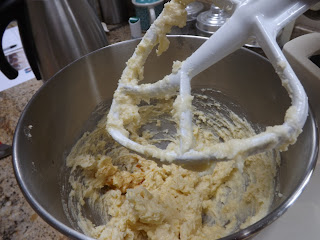A Little History:
Welsh cakes are a traditional bake from Wales, in Welsh they are pronounced picau ar y maen. The cakes are traditionally cooked on bakestones or a cast iron griddle. They are usually made with flour and currants or sultanas. People have added their own twist on the recipe by adding spices such as cinnamon or fruit such as apples. Most people serve Welsh cakes hot dusted with caster sugar and in order for a Welsh cake to be a Welsh cake it must be flat.
Ingredients:
- 225 grams/ 8 Oz Self Raising flour, sieved
- 110 grams/ 4 Oz salted butter
- 1 egg
- 85 grams/ 3 Oz caster sugar
- handful of currents
- extra butter, for greasing
Method:
1. Rub the butter and flour together with your fingers until the mixture looks like breadcrumbs. Then add the sugar, currants and then the egg. Mix to combine, then for a ball of dough. If this doesn't happen add a splash of milk to the mixture.
2. Roll out the pastry with a well floured rolling pin on a well floured surface until its roughly 5 mm thick and then cut into rounds using a 7-10 cm cutter.
3. For this step you need a bakestone or heavy iron griddle. If you are like and don't have one or can't afford one just use a frying pan. Rub your chosen cooking instrument with butter and then wipe of the excess, place on direct heat and wait until the pan heat up. When hot, place the welsh cakes on the pan, leave for 2-3 minutes or until the side of the pan is golden brown, then flip over and wait for the same results.



Some people coat there Welsh cakes with jam and sandwich them together, others smother them with butter whilst they are still piping hot! I just like mine with the traditional sugar!
Its time to leave the UK and head over the channel to France!
Thank you to the BBC for the recipe and my friend Clara who took the photos, she took fifty photos in total, only 18 where on the blog, the rest where of her and my other friend!



























































